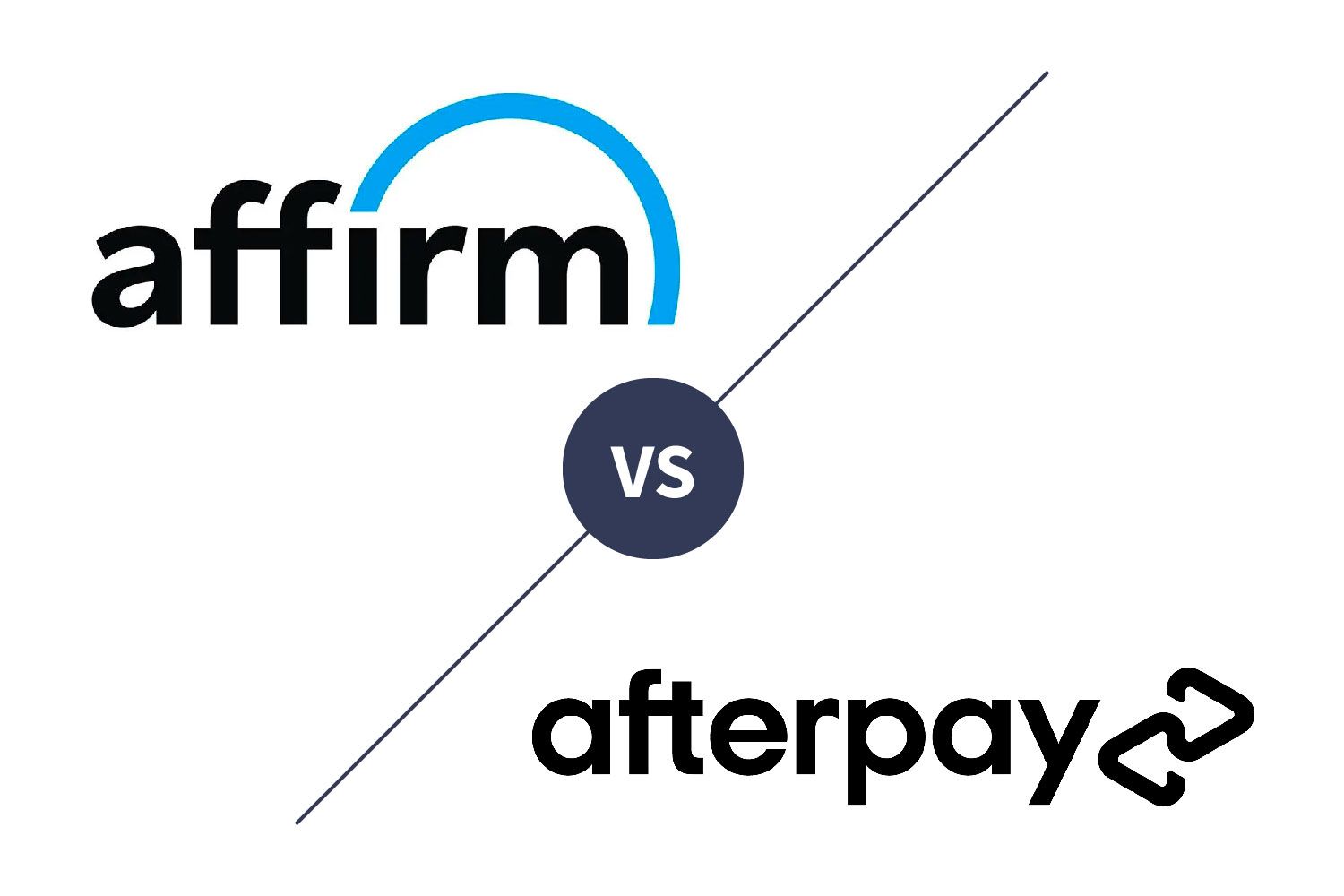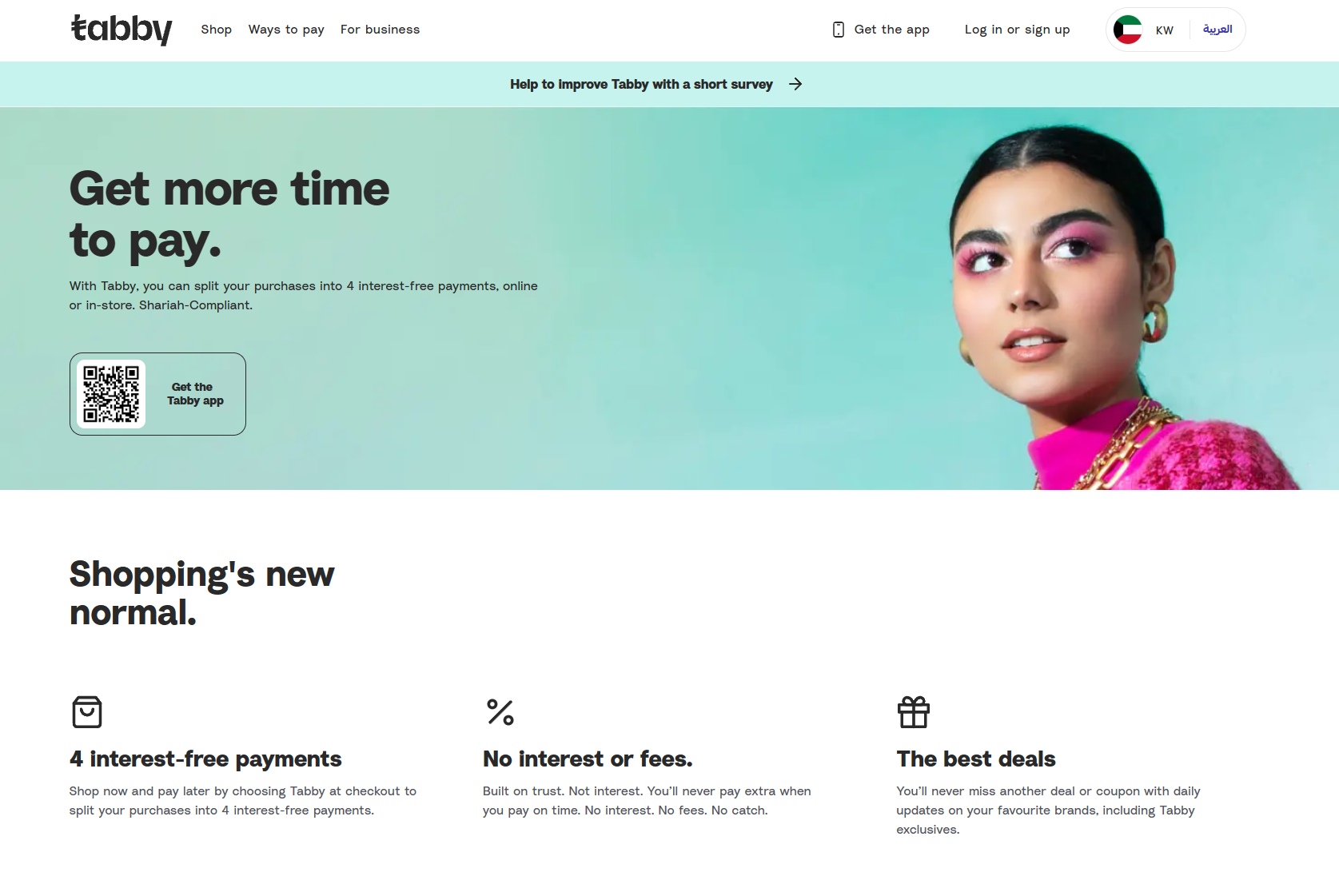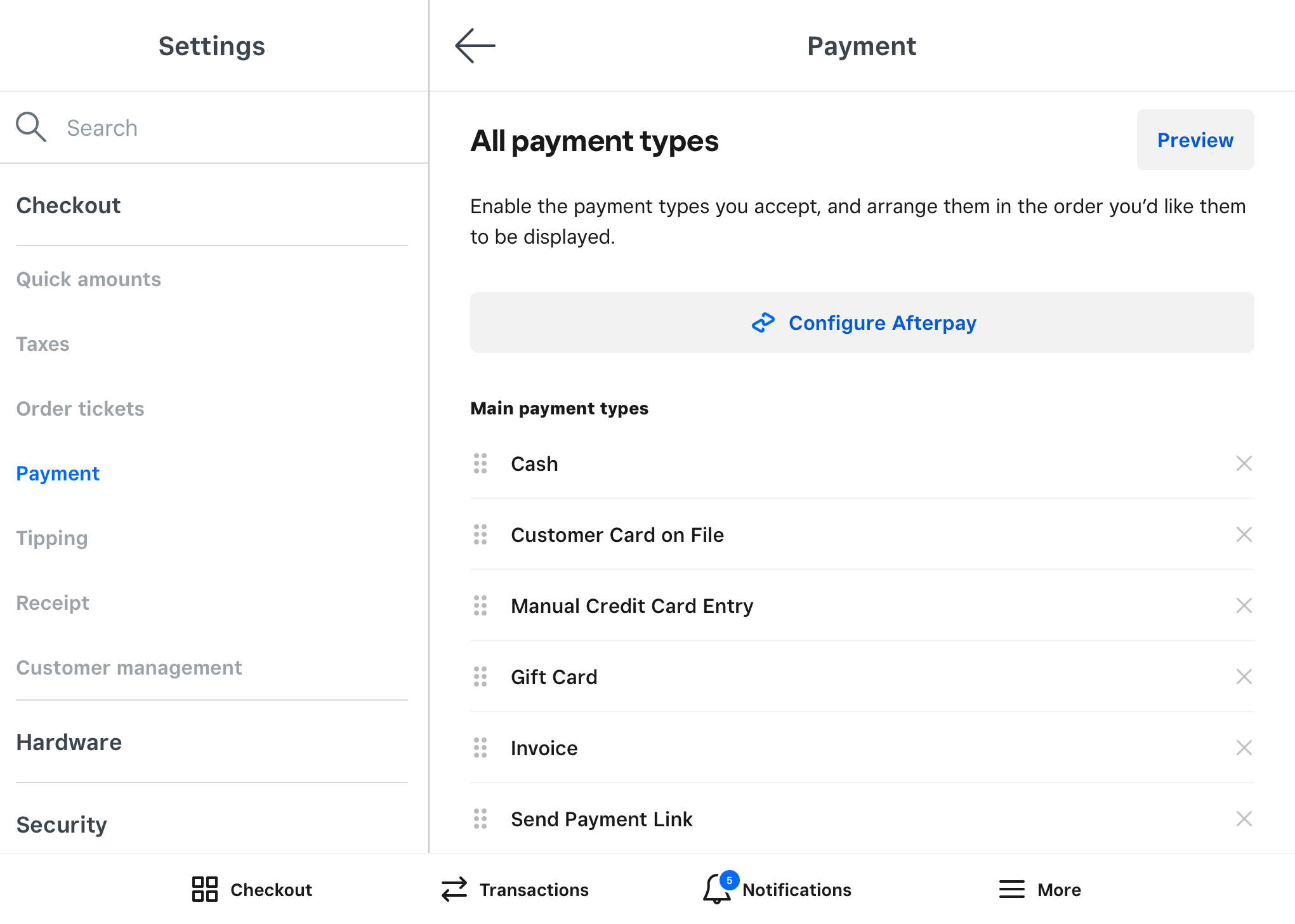Introduction
Welcome to the world of flexible payment options! As online shopping continues to soar in popularity, consumers are seeking convenient ways to spread out their payments and avoid the burden of large upfront costs. Two popular platforms that cater to this need are Affirm and Afterpay. Both offer an alternative to traditional credit cards by allowing customers to divide their purchases into manageable installments.
In this article, we’ll explore the key features and differences between Affirm and Afterpay, helping you decide which platform might be better suited to your needs. Whether you’re a savvy shopper looking to make the most of your budget or a merchant considering offering these payment options to your customers, read on to discover the ins and outs of these services.
It’s important to note that Affirm and Afterpay operate in slightly different ways, so it’s essential to understand the nuances of each platform before deciding which one is right for you. From fees and interest rates to credit check requirements and merchant participation, we’ll delve into the fine details that can make all the difference when considering these payment solutions.
So, sit back, relax, and let’s dive into the world of Affirm and Afterpay, exploring the features and benefits that make them unique. By the end of this article, you’ll have a clearer understanding of which option may better align with your financial goals and shopping preferences.
What is Affirm?
Affirm is a payment solutions platform that allows customers to make purchases and pay for them over time. With Affirm, users can split their purchases into fixed monthly payments, providing them with greater flexibility and control over their budget.
One of the main advantages of using Affirm is its straightforward and transparent pricing structure. Rather than accruing interest like with a traditional credit card, Affirm charges simple interest rates, making it easier to understand the total cost of your purchase upfront. This eliminates any hidden fees or surprises down the line.
To make a purchase with Affirm, customers can select the option at checkout on partner websites or use the Affirm mobile app. Upon selecting Affirm, users are prompted to provide some personal information and undergo a quick evaluation process to determine their eligibility. This helps Affirm evaluate the user’s creditworthiness without impacting their credit score.
Once approved, users can select the desired repayment plan from the available options, which typically range from three to 36 months. Affirm then displays the monthly payment amount, including any interest accrued, allowing customers to make an informed decision before finalizing their purchase.
Another noteworthy feature of Affirm is its partnership with various well-known merchants. This allows users to take advantage of Affirm’s payment options on a wide range of products and services, from fashion and electronics to travel and home decor. Affirm’s seamless integration with partner websites ensures a hassle-free shopping experience for customers.
Additionally, Affirm offers a mobile app that enables users to manage their payments, track their purchases, and even access exclusive deals and discounts. The app provides a convenient way to stay on top of payment due dates and manage multiple purchases in one place.
In summary, Affirm is a payment solutions platform that allows customers to split their purchases into manageable installments. With its transparent pricing, easy application process, and extensive merchant partnerships, Affirm provides an attractive alternative to traditional credit cards for those looking to finance their purchases without the pitfalls of high interest rates and hidden fees.
What is Afterpay?
Afterpay is a buy-now-pay-later platform that allows customers to make purchases and pay for them in four equal installments, spreading the cost over time. It offers a convenient and interest-free alternative to traditional credit cards, appealing to shoppers looking for more flexibility with their payments.
The process of using Afterpay is seamless and user-friendly. When making a purchase online, customers can select Afterpay at the checkout, similar to selecting a payment method. After creating an Afterpay account and linking a debit or credit card, users can complete their purchases with just a few clicks.
One of the standout features of Afterpay is its transparency and simplicity. Unlike credit cards that often incur hidden fees and complex interest rates, Afterpay assigns equal payments that are automatically deducted from the user’s nominated card every two weeks. This makes it easy to budget and plan for payments without worrying about compounding interest.
Afterpay utilizes a soft credit check during the account setup process, which doesn’t impact the customer’s credit score. This makes it accessible to a broader range of people, including those with limited or no credit history. Afterpay focuses more on the customer’s ability to make timely payments rather than their credit history, making it an attractive option for many.
Another notable aspect of Afterpay is its wide acceptance among retailers. From fashion and beauty brands to electronics and homeware stores, Afterpay has partnered with numerous merchants globally, providing customers with a diverse range of products and services to choose from. This makes it convenient for users to utilize Afterpay across different categories and enjoy its benefits with their favorite brands.
Afterpay also has a user-friendly mobile app, allowing customers to manage their payments, view upcoming installments, and keep track of their spending. The app provides a convenient way to monitor payments and update payment methods, making it easier for users to stay organized and in control of their purchases.
In summary, Afterpay is a buy-now-pay-later platform that enables customers to split their payments into four equal installments, interest-free. With its transparent and convenient payment system, flexible credit requirements, and extensive merchant partnerships, Afterpay offers a hassle-free alternative to traditional credit cards, making it an appealing choice for those looking for an accessible and manageable payment solution.
How does Affirm work?
Affirm simplifies the process of financing purchases by offering a straightforward and transparent payment solution. Here’s a step-by-step breakdown of how Affirm works:
- Select Affirm at checkout: When making a purchase on a partner website, customers have the option to choose Affirm as the payment method during the checkout process.
- Provide personal information: Users are prompted to provide personal information, including their name, date of birth, email address, and phone number. Affirm uses this information to verify the user’s identity and evaluate their creditworthiness.
- Undergo a quick evaluation: Affirm performs a soft credit check, which doesn’t impact the user’s credit score, to determine whether they qualify for financing. Affirm considers factors like the user’s credit history and income to make this assessment.
- Choose the repayment plan: If approved, users can select the repayment plan that best suits their needs. Affirm offers options usually ranging from three to 36 months. The monthly payment amount, including any interest, is clearly displayed for each repayment option.
- Make the purchase: Once a repayment plan is selected, users can proceed to complete their purchase. Affirm pays the merchant on behalf of the customer, allowing them to receive their order right away.
- Repay in installments: After the purchase is made, customers are required to make regular monthly payments towards their Affirm loan. These payments can be made via automatic bank transfer, debit card, or check.
- Manage payments: Affirm provides a user-friendly mobile app and online account management system where customers can track their payments, view their loan balance, and keep track of upcoming due dates. This helps users stay organized and in control of their repayment schedule.
It’s important to note that Affirm charges simple interest rates rather than compounding interest. This allows users to understand the total cost of their purchase upfront, making budgeting and financial planning easier. Affirm also offers early payment options, allowing customers to pay off their loan ahead of schedule without incurring any prepayment penalties.
Overall, Affirm simplifies the financing process by offering a transparent and user-friendly experience. By providing clear repayment options, easy-to-understand terms, and a hassle-free application process, Affirm empowers consumers to make flexible and informed purchasing decisions.
How does Afterpay work?
Afterpay offers a convenient and flexible buy-now-pay-later solution that allows customers to divide their payments into four equal installments. Here’s a breakdown of how Afterpay works:
- Select Afterpay at checkout: When making a purchase on a partner website, customers can choose Afterpay as the payment option during the checkout process.
- Create an Afterpay account: If users don’t have an Afterpay account, they will be prompted to create one by providing their email address and creating a password. Existing customers can simply log in to their account.
- Link a debit or credit card: Afterpay requires users to link a debit or credit card to their account. This card will be used for automatic installment deductions.
- Complete the purchase: Once the Afterpay account is set up and the payment method is linked, users can proceed to complete their purchase. The total cost is divided into four equal installments.
- Pay installments: Afterpay charges the first installment at the time of purchase, and subsequent installments are automatically deducted from the linked card every two weeks. Customers receive a payment schedule outlining the due dates and amounts.
- Enjoy the product: Once the purchase is made, customers receive the product or service immediately, without having to wait until the full payment is completed.
- Manage payments: Afterpay provides a mobile app and online account management system where users can view their installment schedule, update payment methods, and keep track of upcoming payments. This allows customers to stay organized and manage their payments conveniently.
One of the primary advantages of Afterpay is its interest-free payment structure. Customers only need to pay the price of the product in the four installments, without any additional interest charges. Afterpay makes money through fees charged to merchants instead of interest charged to consumers.
Afterpay offers a seamless and user-friendly experience, allowing customers to spread out their payments without traditional loan applications or credit checks. It appeals to a wide range of users, including those with limited or no credit history, provided they can meet their payment obligations. Afterpay’s accessibility and flexibility have made it a popular choice among customers and merchants alike.
Overall, Afterpay’s straightforward payment process, interest-free installments, and user-friendly management tools offer a convenient way for customers to make purchases and manage their finances flexibly.
Availability and acceptance
When considering a payment solution like Affirm or Afterpay, it’s important to understand their availability and acceptance in the market. Let’s explore the availability and acceptance of both platforms:
Affirm:
Affirm has gained significant traction over the years and has expanded its reach to be accepted by a wide range of merchants. It partners with various online retailers, ranging from small businesses to well-known brands across different industries, including fashion, electronics, travel, and more. This broad merchant network allows users to enjoy the benefits of Affirm while shopping for their favorite products or services.
Availability-wise, Affirm is primarily available to customers in the United States. However, it has recently started expanding its services to certain international markets as well. For U.S. customers, Affirm is accessible through partner websites at checkout and through the Affirm mobile app, creating a seamless and integrated experience.
Afterpay:
Afterpay has a wide acceptance across various regions, including the United States, Australia, Canada, and the United Kingdom. It has established partnerships with thousands of retailers, making it widely available to customers in these countries across different industries and sectors.
With its extensive merchant network, Afterpay is increasingly becoming a preferred payment option for both online and physical retailers. It offers a convenient way for customers to split payments and make purchases without the need for traditional credit cards or third-party financing.
Moreover, Afterpay has been expanding its presence in various markets and continually seeking partnerships to broaden its acceptance. This ongoing expansion translates into increased availability for consumers, giving them more options to use Afterpay for their purchases.
It’s important for customers to check the individual merchant’s website or app to confirm if they accept either Affirm or Afterpay. Many partner websites prominently display the accepted payment methods, making it easy for users to determine if they can use their preferred payment solution.
In summary, both Affirm and Afterpay have established strong networks of merchants, which allows customers to enjoy the benefits of their payment solutions across a wide range of industries. While Affirm primarily operates in the United States with some international presence, Afterpay is available in multiple countries, including the United States, Australia, Canada, and the United Kingdom. The widespread acceptance of Afterpay and Affirm makes it convenient for customers to find participating retailers and take advantage of flexible payment options.
Fees and interest rates
Understanding the fees and interest rates associated with a payment solution like Affirm or Afterpay is crucial to make an informed decision. Here’s an overview of the fees and interest rates for both platforms:
Affirm:
Affirm charges interest on its loans; however, it follows a straightforward and transparent pricing structure. The interest rates can vary depending on factors like the borrower’s creditworthiness and the repayment term chosen. Interest rates typically range from 0% to 30%. When making a purchase, Affirm clearly displays the interest rate, total amount financed, and the monthly payment amount, so customers can see the cost breakdown before finalizing the purchase. This transparent approach ensures there are no hidden fees or surprises in the repayment process.
In addition to interest charges, Affirm may also charge late fees for missed payments. It’s important for customers to adhere to the repayment schedule and make timely payments to avoid any additional fees.
Afterpay:
Afterpay does not charge any interest on its installment payments. Instead, it makes money through fees charged to the merchants. Customers only need to pay the price of the product or service in four equal installments. If the payments are made on time, there are no additional fees or charges for using Afterpay.
However, it’s worth noting that Afterpay does charge late fees if a payment is missed. These fees can vary depending on the region and the amount owed but are typically a fixed amount or a percentage of the outstanding balance. To avoid late fees, it’s important for customers to make their payments on time and stay on top of their installment schedule.
It’s important for customers to read and understand the terms and conditions of both Affirm and Afterpay to be aware of any potential fees or charges associated with their use. While Afterpay does not charge interest, customers should still exercise caution and ensure they can meet their payment obligations to avoid any penalties.
In summary, Affirm charges interest on its loans, with interest rates varying based on the borrower’s creditworthiness and repayment term. Afterpay, on the other hand, does not charge any interest, instead generating revenue through fees paid by the merchants. However, Afterpay may impose late fees if payments are missed. Understanding the fees and charges associated with each platform allows customers to make an informed decision based on their financial situation and preferences.
Credit check requirements
When considering payment solutions like Affirm or Afterpay, it’s important to understand the credit check requirements and how they may impact the user. Let’s delve into the credit check requirements for both platforms:
Affirm:
Affirm conducts a soft credit check during the application process. This type of credit check does not impact the user’s credit score, making it a non-intrusive evaluation of the user’s creditworthiness. Affirm considers various factors, including the user’s credit history and income, to assess their eligibility for financing.
While Affirm performs a credit check, it is important to note that having a lower credit score does not necessarily disqualify individuals from using Affirm. Affirm aims to make its payment solution accessible to a wider range of users, including those with limited or no credit history.
Customers who have a good credit history may have a higher chance of being approved for Affirm financing and may be offered more favorable interest rates. However, Affirm’s application process takes into account multiple factors, providing users with an opportunity to secure financing even if they have a less-than-perfect credit score.
Afterpay:
One of the key advantages of Afterpay is its approach to credit checks. Afterpay does not perform a traditional credit check during the account setup process. Instead, its focus is on the customer’s ability to make timely payments.
To use Afterpay, customers need to have a valid debit or credit card and provide some basic personal information. Afterpay’s evaluation process considers factors such as the customer’s payment history, transaction activity, and account activity, rather than relying solely on credit scores.
This unique approach to credit check requirements allows Afterpay to cater to a broader range of users, including those with limited credit history or a less-than-perfect credit score. By assessing the customer’s current financial situation, Afterpay aims to provide accessible and flexible payment options to more individuals.
It’s worth noting that although Afterpay does not perform a traditional credit check, it may report late or missed payments to credit reporting agencies. This can potentially impact the customer’s credit score if payments are not made as agreed.
In summary, Affirm conducts a soft credit check to evaluate the user’s creditworthiness, considering factors like credit history and income. Afterpay, on the other hand, focuses more on the customer’s ability to make timely payments rather than traditional credit scores. This makes Afterpay more accessible to customers with limited credit history or lower credit scores. It’s important for users to be aware of the potential impact on their credit score and ensure they can meet their payment obligations to avoid any negative consequences.
Customer experience
The customer experience is a vital aspect to consider when comparing payment solutions like Affirm and Afterpay. Let’s explore the customer experience offered by both platforms:
Affirm:
Affirm strives to provide a seamless and user-friendly experience for its customers. The application process is quick and straightforward, typically only requiring basic personal information. Affirm’s soft credit check ensures that users can evaluate their eligibility without impacting their credit score.
Once approved and ready to make a purchase, customers can easily select Affirm as the payment option at checkout on partner websites or through the Affirm mobile app. The clear display of repayment options, including interest rates and monthly payments, empowers customers to make informed decisions based on their financial situation and preferences.
Affirm’s online account management system and mobile app allow users to track their payments, view their loan balance, and manage their purchases conveniently. This ensures that customers can stay organized and in control of their payments, with access to helpful tools and resources.
Affirm’s extensive network of partner merchants also enhances the customer experience. With a wide range of retailers offering Affirm as a payment option, customers can enjoy the flexibility and convenience across various industries and product categories.
Afterpay:
Afterpay also focuses on delivering a positive customer experience. Its simple and intuitive platform allows users to quickly create an Afterpay account and link their debit or credit card. The straightforward setup process ensures that customers can start using Afterpay almost immediately.
When making a purchase with Afterpay, customers receive instant approvals, allowing them to complete their transactions seamlessly. The ability to divide payments into four equal installments, without any interest charges, appeals to customers looking for more control over their budget.
Afterpay’s mobile app and online account management system provide customers with convenient tools to track their payments, view their installment schedule, and manage their account details. This helps users stay organized and on top of their payments, reducing the chances of missed or late payments.
Additionally, Afterpay offers a personalized user experience, providing tailored recommendations and exclusive offers based on the customer’s shopping history and preferences. This enhances the overall shopping experience and encourages customer loyalty.
Overall, both Affirm and Afterpay prioritize delivering a positive customer experience. Through their user-friendly interfaces, transparency in payment terms, and robust account management tools, both platforms aim to provide a seamless and convenient experience for customers, ultimately contributing to customer satisfaction and loyalty.
Merchant participation
The level of merchant participation is an important factor to consider when evaluating payment solutions like Affirm and Afterpay. Let’s take a closer look at the merchant participation and benefits of both platforms:
Affirm:
Affirm boasts a growing network of partner merchants across a wide range of industries. From small businesses to well-known brands, Affirm has established partnerships with numerous online retailers, making it accessible to customers shopping in various sectors.
Merchant participation is a crucial aspect of Affirm’s success. By integrating Affirm into their checkout process, partner merchants can offer their customers a flexible payment option that allows them to spread out their purchases over time.
For merchants, partnering with Affirm can have several benefits. By providing customers with the option to pay with Affirm, merchants can attract new customers who may prefer a payment solution other than traditional credit cards. Affirm can also help increase average order values by enabling customers to make larger purchases that they may not have been able to afford in one lump sum.
Additionally, Affirm offers tools and resources to help merchants optimize their customer experience and increase conversion rates. Affirm’s marketing support and analytics allow merchants to gain insights into customer behavior and preferences, optimizing their sales strategies and maximizing revenue potential.
Afterpay:
Afterpay has rapidly gained popularity among merchants, with thousands of retailers worldwide partnering with the platform. Its broad merchant participation has made Afterpay a common payment option across various industries, including fashion, beauty, electronics, and more.
For merchants, Afterpay provides a competitive advantage by offering customers a convenient and flexible payment solution. With Afterpay as a payment option, merchants can tap into a wider customer base and attract new customers who may be drawn to the option of interest-free installments.
Afterpay also provides marketing and promotional support to its merchant partners. Through personalized recommendations and exclusive offers, Afterpay helps merchants expand their reach and increase customer engagement.
Furthermore, Afterpay has introduced its “Shop Directory,” a feature that showcases participating merchants and allows customers to discover new retailers that offer Afterpay as a payment option. This directory increases visibility for merchants, potentially driving more traffic and conversions.
In summary, both Affirm and Afterpay have amassed significant merchant participation. By partnering with these platforms, merchants can offer their customers flexible payment options, attract new customers, increase average order values, and benefit from marketing support. The extensive network of partner merchants enhances the appeal and convenience of using these payment solutions for customers across various industries.
Conclusion
When it comes to flexible payment options, both Affirm and Afterpay offer attractive solutions for customers looking to spread out their payments and avoid the burden of upfront costs. While they serve a similar purpose, there are key differences between the two platforms that users should consider.
Affirm stands out with its transparent pricing structure, providing customers with clear interest rates and repayment terms. It appeals to those who value understanding the total cost upfront and appreciate the seamless integration with a wide network of partner merchants.
Afterpay, on the other hand, offers interest-free installments and boasts a broad acceptance among merchants globally. It provides customers with a convenient and flexible buy-now-pay-later solution, appealing to those looking for a hassle-free payment option without the complexities of credit checks or high-interest rates.
Ultimately, the choice between Affirm and Afterpay will depend on individual preferences, financial goals, and the availability of the platforms in one’s location. Customers with a good credit history may find Affirm’s interest rates and partnership offerings more favorable, while those seeking accessibility and simplicity may lean towards Afterpay’s interest-free installments and wide acceptance among merchants.
Before deciding on a payment solution, it’s important to consider factors such as fees and interest rates, credit check requirements, merchant participation, and the overall customer experience offered by each platform. Assessing how these factors align with one’s specific needs and circumstances will help determine which payment option is better suited.
Ultimately, both Affirm and Afterpay provide convenient and flexible payment solutions that can enhance the shopping experience and help customers manage their finances more effectively. Whether it’s dividing payments into fixed installments or spreading the cost interest-free, both platforms empower customers to make purchases on their own terms and budget.
Regardless of the chosen platform, it’s essential for customers to use these payment solutions responsibly and ensure that they can comfortably meet their payment obligations. By doing so, customers can leverage the benefits of these platforms while maintaining financial stability.

























